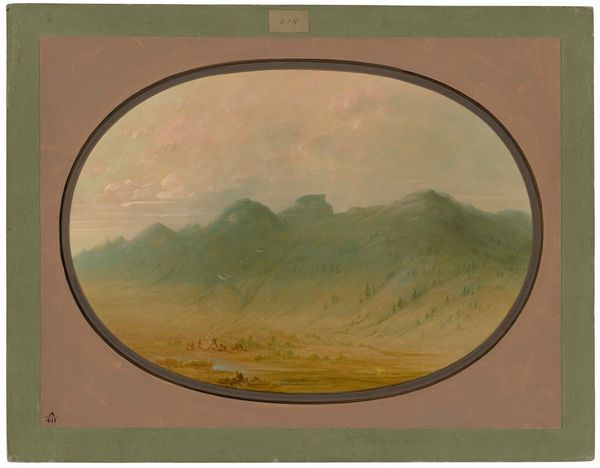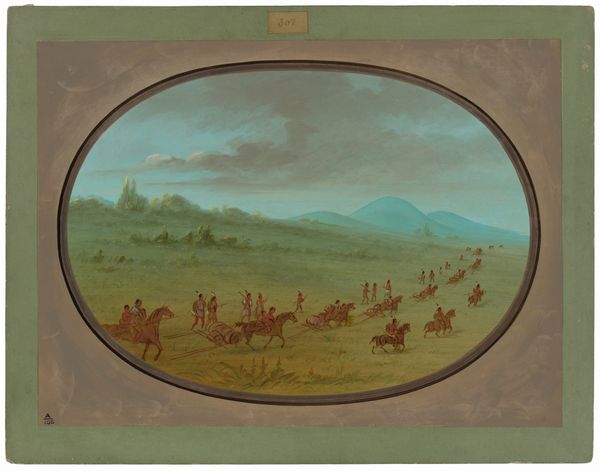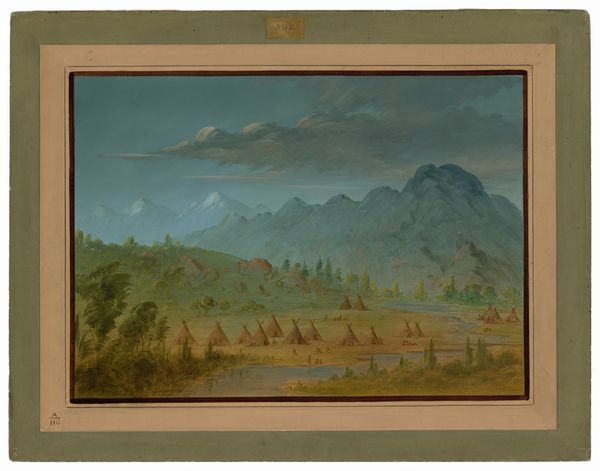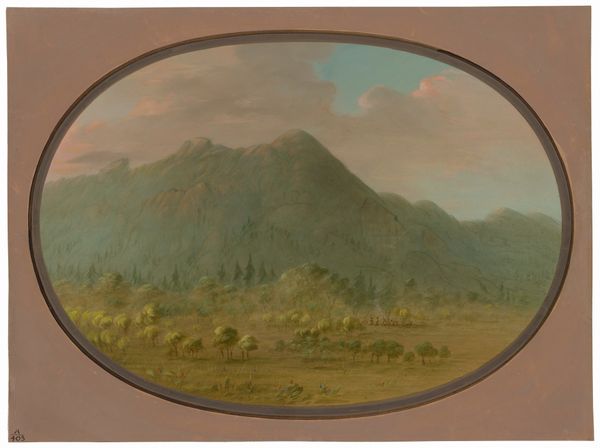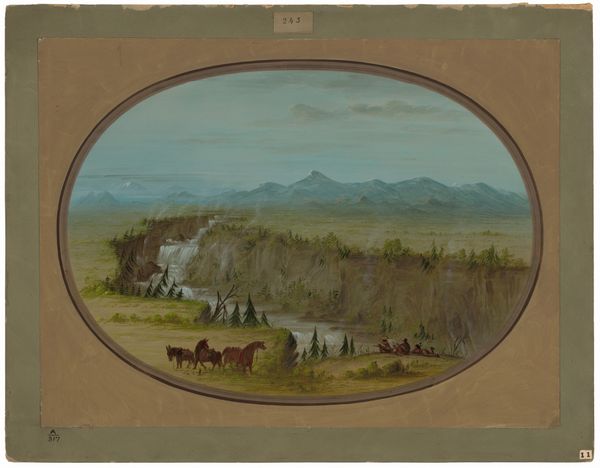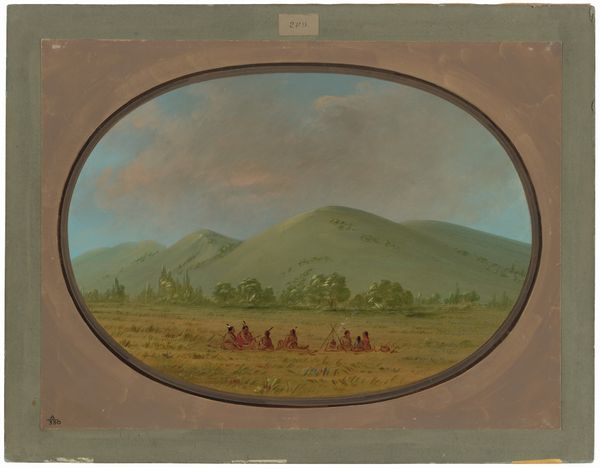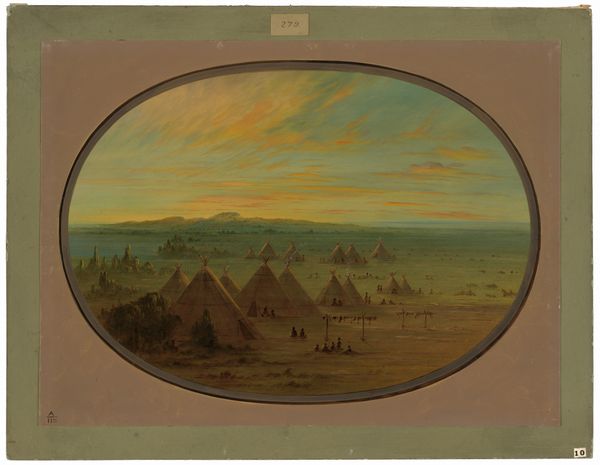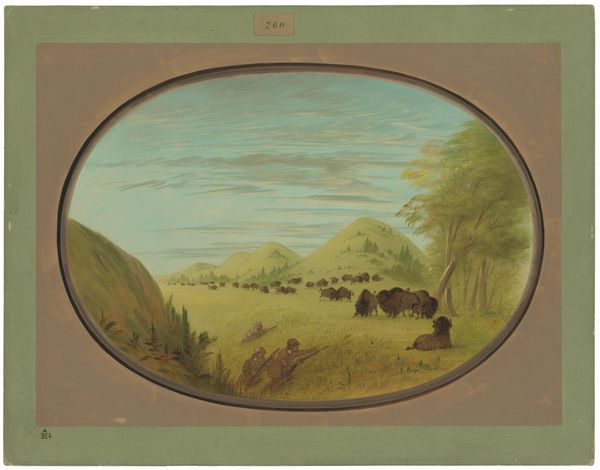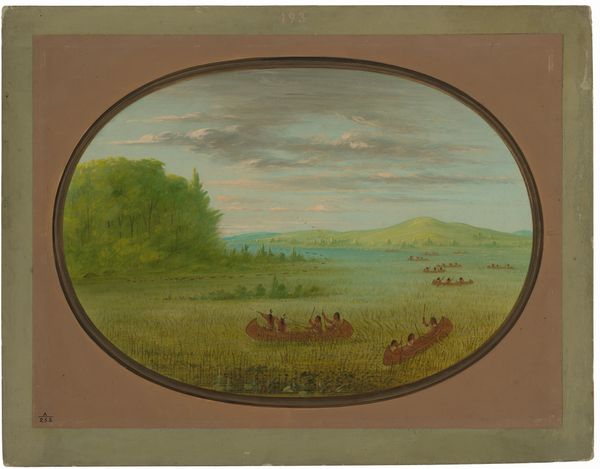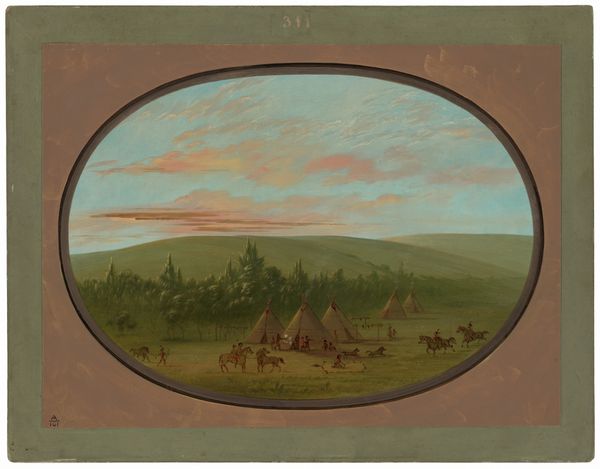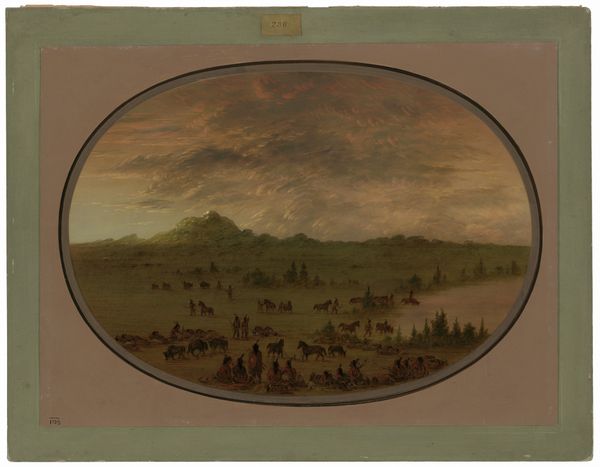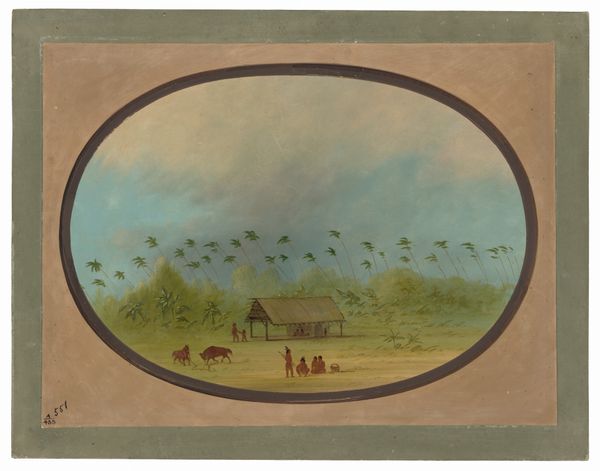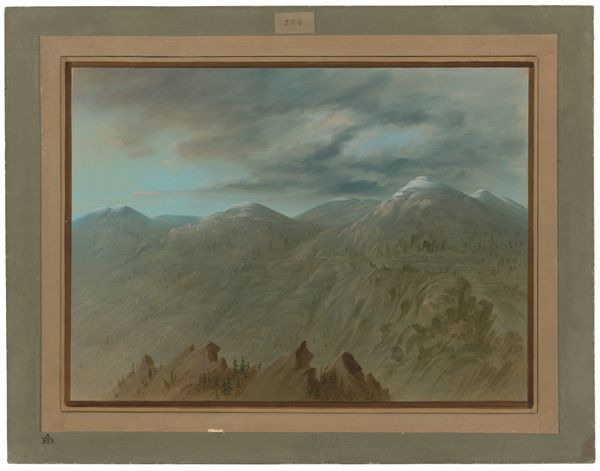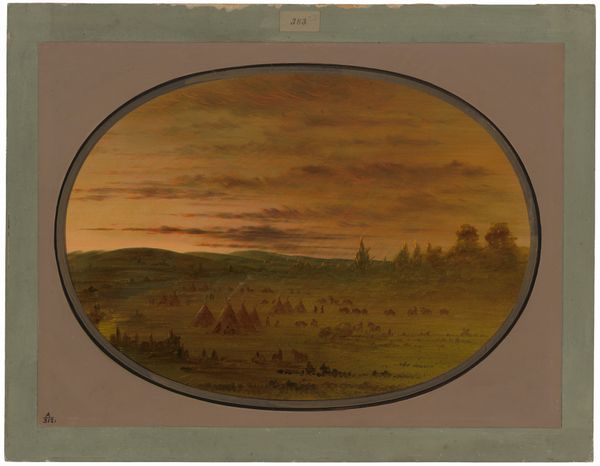
painting
#
water colours
#
painting
#
landscape
#
watercolour illustration
#
watercolor
Dimensions: overall: 46.8 x 62.8 cm (18 7/16 x 24 3/4 in.)
Copyright: National Gallery of Art: CC0 1.0
Editor: Here we have George Catlin’s "A Small Crow Village," dating from the 1850s or 60s. It's a watercolour painting that captures a village scene nestled by a river, with monumental mountains rising in the background. I’m struck by its serene atmosphere. What do you see in this piece? Curator: I see layers of cultural memory embedded in this deceptively simple watercolor. Look at the positioning of the teepees; they are not just dwellings but resonate with the cyclical nature of life and the tribe’s connection to the land. The mountains are like silent witnesses to their history, acting as powerful cultural signifiers. Editor: It almost feels like he's romanticizing their way of life. Is that a fair assessment? Curator: It's tempting to view it through that lens, isn’t it? But remember Catlin dedicated much of his life to documenting Native American cultures he feared were disappearing. His romanticism, if we call it that, functions as a means of preserving a visual record – albeit tinged with his own cultural perspective. Consider how he emphasizes their harmonious existence with nature through the chosen imagery of mountains and water. Editor: So the act of documenting becomes part of the meaning, transforming the village scene into something more symbolic? Curator: Precisely! The symbol becomes entwined with its preservation. Even the subtle use of light and shadow carries emotional weight. Notice the soft pastel colours; how do they make you feel about the village and its inhabitants? Editor: There's a certain stillness, a feeling of peace, almost melancholic perhaps, considering the history… Curator: Exactly! It encapsulates a moment on the brink of irreversible change, a symbol pregnant with a past and an uncertain future. Editor: I hadn't considered the artwork as such a poignant marker of time and cultural anxiety. Thank you. Curator: It is always rewarding to unpack the layers of symbolism within seemingly straightforward imagery; seeing echoes of a people's journey through the eyes of an artist.
Comments
No comments
Be the first to comment and join the conversation on the ultimate creative platform.
